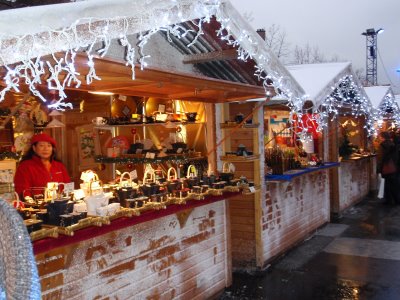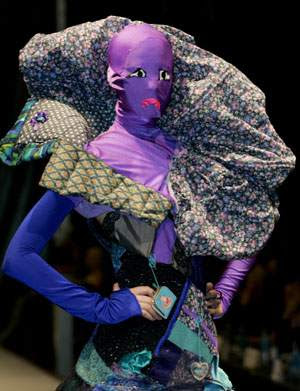Some of the most famous Christmas markets in Europe have been running since the Middle Ages, and today they can draw upwards of two million visitors during December.
Their appeal is simple: stress-free shopping in a traditional,
festive environment (expect carol singers, not taped Bing Crosby), with a
few mugs of mulled wine to help you along your way. Having said that,
don’t expect to get much other than stocking-fillers – the markets tend
to focus on local arts and crafts and hand-made Christmas decorations.
1. Cologne Christmas Markets
The backdrop is certainly impressive, and the 160 or so stalls that pack beneath the lofty Gothic structure make the most of their tourist-friendly position. Positioned around a vast Christmas tree, the stalls offer the usual range of Yuletide wares, including Christmas tree decorations, arts and crafts, hand-made candles and ceramics. Sweet stalls jostle for space with Glühwein traders, and street musicians and professional bands entertain the hordes.
A little to the south, on the cobbled square of the Alter Markt in the heart of the old town, is the city’s most enjoyable market, with an old fashioned, child-friendly appeal. There is a traditional merry-go-round, a puppet theatre, a Santa’s Grotto and lots of stalls stocking hand-made wooden toys, gingerbread, boiled sweets and cotton candy. Here the stands are half-timbered, giving the whole market a time-warped feel.
2. Vienna Christmas Market
The ‘Christkindlmarkt’ on the square in front of the magnificent Town Hall is Vienna's classic Christmas market. It is one of the best-known and most visited in Europe, attracting millions of visitors to its rows of wooden huts leading up to the Hall. It is certainly one of the oldest, dating back over seven hundred years, and starts early – from mid-November – which is handy for those wanting to avoid the pre-Christmas crowds.
The park surrounding the market is one of the highlights, its trees decorated with themed lights, shaped like hearts or gingerbread men. The market itself has a central row of stalls selling hand-crafted decorations and arty bits and pieces, as well as deliciously scented natural beeswax candles.
The Vokshalle, within the Town Hall, is home to a daily workshop for kids in Viennawhere parents can drop them off to make presents and bake Christmas cookies. An added attraction is that throughout December choirs from around the world perform in the Festival Hall at weekends.
3. Nuremberg Christmas Market
One of the best-known Christmas markets in Europe is the one held at Nuremberg, although it is neither the largest nor oldest. Nevertheless, the setting is beautiful, with almost two hundred stalls crammed into the cobbled square on the slope beneath the Frauenkirche.
The market dates back to 1628, and is known as a regional centre for trading handmade wood figurines. It has a rather odd tradition: every two years a new ‘Christ child’ is appointed, a young man or woman who opens the market and rushes around town spreading Christmas cheer, dressed in elaborate gold and white and sporting a large golden crown.
Eccentric traditions aside, the market is best known for its food, which includes several stalls selling steaming Glühwein and grilled Nürnberger Bratwurst, delicious thin and spicy sausages.
Another favourite is the local Lebkuchen, or gingerbread, sticky and sweet with honey. In the evening, the market is softly lit with hundreds of tiny lights, and bands arrive to entertain the punters – you’ll hear anything from brass bands to live jazz.
4. Dresden Christmas Market
The first mention of Dresden’s Christmas market was in 1434, making this the oldest in Germany. It is steeped in tradition and locals are understandably fond of their Striezelmarkt, named after the local ‘Striezel’ or Stollen, a sweet fruitcake baked in the shape of a loaf and dusted with icing sugar.
The highlight of the annual market is the Stollen Festival, held on the second Sunday in December. In the 16th century, the local Stollen bakers would present cakes to the local prince, carrying them ceremoniously through the town to the castle, where the prince would cut them with a five-foot knife and hand out pieces to the poor. Today, one giant 3,000 kg Stollen is paraded around Dresden as part of the festival, presided over by a glamorous ‘Stollenmädchen’ – a ‘Miss Cake’, if you like.
The market is pretty and old fashioned, with around 250 stalls selling strictly traditional wares. It has better shopping than elsewhere though, with regional craftsmen flocking to the area to peddle their wares. Some good buys include delicate, hand-blown glass baubles from the town of Lauscha; hand-thrown and -fired ceramics from Saxony painted in bright blue and white; and local ‘Blaudruck’ – white-and-blue printed cloth.
5. Brussels Christmas Market
In a city famous for its cuisine, it’s good to find that its Christmas market is a good choice for foodies. Here, the market takes over the Grand-Place, Brussels’ commercial hub, famous for the lavishly carved facades of its guildhouses. Strings of lights cascade down from the centre, over the little chalet-style wooden huts which cluster around the square, each representing a different European country (although most of what’s on offer is the usual array of Christmas decorations and arts and crafts).
There are some good food stalls, though – alongside mulled wine are stands dishing out plump French olives, mountains of Belgian chocolates, steaming plates of moules or steamed snails, jars of preserved fruits and ‘speculoos’, hard gingerbread shaped like Father Christmas.
The Fish Market is transformed into a temporary ice rink in December, making it a big attraction for locals. Carols are filtered through loudspeakers, and jugglers, street musicians and painters brave the cold to entertain the crowds. From December 23rd, many of the stalls switch hands, and the market becomes more of a gastronomic affair.
6. Munich Christmas Market
The focal point of Munich in December is famous Marienplatz, the heart of the old centre, flanked by the grand neo-gothic town hall and filled with hundreds of stalls in the run-up to Christmas. There are a number of smaller markets dotted around the city, but this is the largest and dates back to the 17th century.
The market is inaugurated on the Friday before the first Advent, when thousands gather in the square to watch the thirty metre-high Christmas tree light up for the first time. Over 140 stalls are set up in the square, selling hand-carved wooden Christmas decorations, glass baubles, jewellery, arts and crafts.
Behind the main market is the Crib Market, where traditional nativity figures from Bavaria and Austria are for sale. It couldn't be more different than the Oktoberfest if it tried. Every evening at 5.30pm, Alpine choirs and brass bands perform from the Town Hall balcony, while locals stream to the food stalls for an after-work plate of hot potato cakes and a mug of Glühwein. There is a child crèche in the town hall, and the ‘Heavenly Workshop’ is a free area for children to paint, make Christmas cookies and dress up as angels.
7. Prague Christmas Markets
The Czechs take Christmas seriously, and the capital hosts a number of cultural events, folk displays, concerts and theatre in December. It’s unpronounceable Vanocni trh (or Christmas markets) are fairly low-key and family friendly – there are several dotted around town, and the biggest is held on the busy Old Town Square.
The idyllic Baroque setting of the cobbled square seems perfectly suited to a quaint seasonal market, helped along by the generous layer of snow that visitors should expect at this time of year. A central petting zoo, complete with ponies, goats, sheep and a single folorn-looking lama, is the big attraction for kids.
The rows of colourfully decorated wooden huts stock some attractive hand-made stocking fillers, including the locally made wood-carved puppets, jewellery, toys and candles. You may also find some good deals on Bohemian crystal. A central stage hosts daily carol singers and bands playing seasonal tunes.
8. Tallinn Christmas Market
What Tallinn’s market lacks in history – it’s only been running since 1991 – it makes up for in atmosphere and romantic appeal. The Christmas market takes place on the ludicrously picturesque Raekoja plats, the Old Town Hall Square, a cobbled expanse dominated by the 15th-centry Town Hall, although all the surrounding buildings are chocolate-box charming.
Given its latitude, you’re almost guaranteed snow here, and while the small market isn’t worth visiting for alone, it adds significantly to the old-fashioned romance of a snow-dusted weekend here. A brightly lit Christmas tree stands above the groups of stalls which line the square, selling a range of Estonian arts and crafts, mulled wine and sausages.
You can pick up some good hand-made, natural, gifts here – such as carved wooden bowls or decorations made from wood and twine. The best buy, though, is the hand-knitted jumpers, socks and bobble-hats, knitted in natural grey, white and beige wool.
Father Christmas arrives in the evenings to pose for photos with children, although the low-key atmosphere probably makes it a better choice for couples. There are several candle-lit restaurants fringing the square, making good refuges if the cold gets too much.
9. Berlin Christmas Market
As befits a city as modern and edgy as Berlin, the city’s main Christmas market has an altogether more contemporary feel than those in the rest of Germany. There are actually several markets that take place around the city, but the most popular – and most visited, with around four million visitors last year – is the one that takes place around the Kaiser Wilhelm Gedächtniskirche.
The setting itself is interesting, with stalls clustered around the Gedächtniskirche (or Memorial Church) which was hit in a bomb attack in WWII, and left only partly restored as a poignant reminder to the war.
The market isn’t as large as one might expect, with around one hundred stalls, housed in traditional rustic, wooden huts that seem rather out of place in Berlin. There’s the usual array of traditional arts, crafts and Christmas decorations, but the fact that the city is home to some of Europe’s leading cutting-edge artists and designers doesn’t go unnoticed – you should find a good selection of more radical artworks and decorations, as well as an eclectic selection of antique and contemporary jewellery.
10. Copenhagen Christmas Market
Europe’s oldest amusement park, the Tivoli Gardens, hosts Copenhagen’s annual Christmas market. The setting is out of Hans Christian Andersen, with hundreds of Christmas trees and over half a million lights illuminating the stalls and park.
The main lake is transformed into an outdoor ice skating rink, where visitors can hire skates. There are around 60 colourfully-painted stalls, selling locally produced arts, crafts and decorations, such as Copenhagen porcelain or wooden dolls.
There are plenty of food stalls – the main draw here is glögg, Danish mulled wine mixed with liquor and spices. Hot apple dumplings make for a warming mid-shopping snack. Other attractions include pony rides, a Father Christmas who does the rounds and poses for photos in the ‘leprechaun tent’ – filled, rather bizarrely, with actors dressed as red-clad leprechauns.






















































